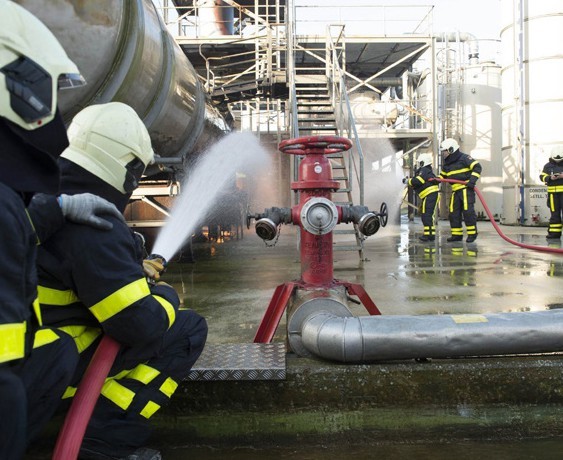
Articles & Insights
Effective preparedness and pre-emergency fire planning

The tenth virtual SHEQ workshop presented by Agbiz and Agbiz Grain centred on emergency preparedness and pre-emergency planning for fires, highlighting its relevance, key objectives, and practical implementation. The session was led by Ruben Els, director of operational risk services at Riskonet, who illustrated key concepts through case studies from fire investigations and post-loss investigations.
These examples highlighted the critical need for detailed, well-structured, clearly documented, and routinely tested emergency plans. Els said that the effectiveness of any emergency response depends on the alignment and integration of all preparedness components. Pre-emergency planning is the proactive preparation for unforeseen events. This includes creating a detailed response plan, training staff, and completing regular drills. Without a proper emergency plan in place, a situation can escalate quickly with serious consequences.
Basic fire response plan
Riskonet is involved in numerous site assessments, which almost always involves an evaluation of the emergency planning manual. In most cases the companies have a basic fire response plan that typically includes notifying the fire marshal, attacking the fire, sounding the alarm to evacuate staff, and calling the fire brigade. This type of plan should be sufficient for most small, basic risks; however, a basic plan is not suitable for all risks. Els noted that plans are only effective if well developed, risk based, communicated, and practised. A plan that exists only on paper is unlikely to succeed in a real emergency.
He also highlighted that understanding different definitions of pre-emergency planning can help organisations design better plans. He focussed on three definitions taken from NFPA 1629, the International Fire Service Training Association (IFSTA), and fire chief Alan Brunacini. All of these have distinct similarities and could be summarised as follows: An emergency plan is a document which is developed prior to an emergency and based on the information collected to assist first responders to manage all possible emergencies at a specific location.
Els outlined several key objectives that every emergency plan should include:
- • Gather critical information for use during an incident.
- • Highlight site features that influence tactical decisions.
- • Develop a flexible plan of attack. Fires are unpredictable, so plans must allow for rapid strategy changes.
- • Ensure a predictable start to operations.
- • Eliminate guesswork during response.
- • Enable immediate and clear actions, giving the incident commander time to assess the situation and plan further.
- • Plan for effective use of resources. In remote or resource-limited areas, knowing the available tools – like water sources – and how to deploy them is vital.
- • Support primary planning, a management function that analyses hazards and matches resources to risk.
- • Identify hazards and response limits. For example, limited water may mean allowing a fire to burn under controlled circumstances.
- • Ensure practicality. Plans should be concise, easy to access, and useful to responders. In some areas, local by-laws require site plans to be posted at entrances for quick reference.
- • Achieve the ultimate goal to save lives, protect property, and minimise losses.
